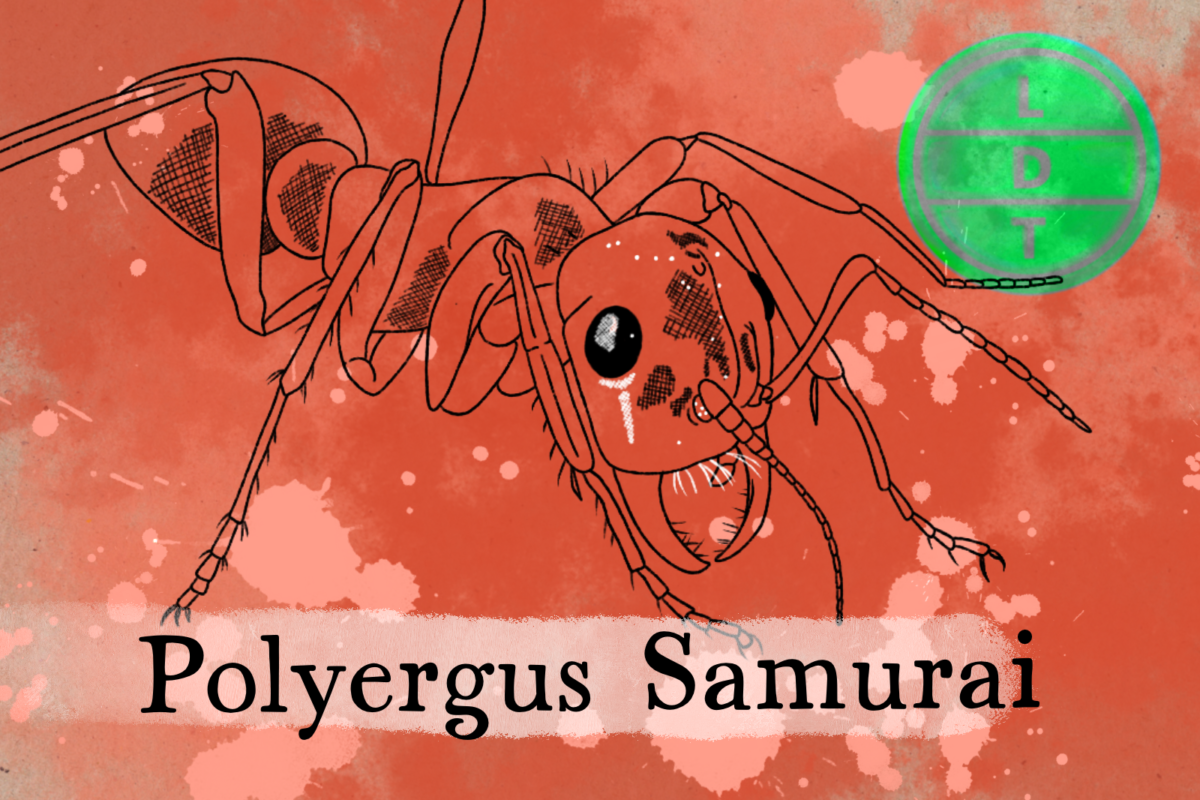“…and today we are talking about an ant that is absolutely canceled. But more on that later.”
In Pixar’s A Bug’s Life, the ants are the good guys, but studying ants shows that ants aren’t exactly on the right side of history. If you didn’t already know that the bug world was a brutal one, the habits of the slaver ant should clue you in. An entire species that completely depends on the subjugation of another is par for the course in our fallen world, but it’s how the slaver ant survives here in LDT.
Description of the Slaver Ant
- The queen and workers of this slave-making ant species are typically black or dark brown, matching the color of their host species.
- Males are brown with white antennae and wings. Pretty sick.
Measure Up
Welcome to the beloved Measure Up segment. The official listener’s favorite part of the show! The part of the show when we present the animal’s size and dimension in relatable terms through a quiz that’s fun for the whole family. It’s also the part of the show that’s introduced by you when you send in audio of yourself saying, singing, or chittering the words Measure Up into ldtaxonomy at gmail dot com. We don’t have a new Measure Up intro!
Worker Length
- 7 mm (0.27 inches)
- How many worker ants go into the highest altitude by an air-breathing jet engine?
- Hint: The highest altitude for an air-breathing jet engine was the military’s Lockheed SR-71 Blackbird. The Blackbird is a long-range, high altitude reconnaissance aircraft, capable of traveling at more than Mach 3.4.
- 4,000,000 ants. The Blackbird can fly at 90,000 feet.
Queen Length
- 8 mm (0.3 inches)
- How many queen ant lengths could the Lockheed SR-71 Blackbird travel in an hour?
- Hint: The Blackbird’s top speed was set at 3.4 in a test flight. However, Major Brian Shul reported a speed of more than Mach 3.5 on an operation while evading a missile over Libya.
- 540,224,594 ants. Mach 3.5 is 2,685.44 mph.
Fast Facts about the Slaver Ant
Slaver ants are native to Japan, but they can be found in Korea and northeastern China.
There are 14 species in the genus, and they all share similar behaviors we’ll talk about later.
Polyergus workers are built to be deadly. They have sharp thin mandibles that make them skilled in dispatching other arthropods. However, they are completely unable to feed themselves, because of the shape of their mouth parts.
Colonies only have one queen, but they may have ergatoids, which might* be able to reproduce if the queen is killed (*researchers aren’t sure yet).
Colonies have a lifespan of about 10 to 15 years.
Major Fact: Hill Raiders
Humans have been enslaving each other since forever.
We like to blame just Europeans for slavery, but if you look at history, you’ll see that pretty much every race across the continents and across time has engaged in slavery from the Egyptians to the Jews to the Assyrians to the Babylonians to the Persians to the Greeks to the Romans to the Mongols to the West African empires, to Europeans, we just love to give prisoners jobs.
But animals tend to be different. When it comes to members of other species, they either get along, ignore each other, fight each other for territory, or eat each other… fairly tame stuff.
It’s rare for one species to dominate and enslave the other.
But we already know that ants love to be both farmers and ranchers, so why not slavers?
There is another species of ant that is common in Japan called Formica Japonica, and their reign of terror has gone on long enough.
A young samurai queen will leave her colony, mates (this is important), find a formica japonica colony, invade, kill the queen, and then take her crown.
She will then start laying eggs from the mating she did previously with another samurai ant. The hatchlings from these eggs will become her little slavers.
Eventually, the host Formica ants will start to die out and the slavers will gain a numerical advantage.
The samurai slavers will start to find other Formica colonies nearby and form large raiding parties.
When they raid a Formica colony, they will go in and steal as many larvae as possible and bring them back to their colony. These larvae will grow up to be workers in the samurai colony, so the samurai don’t have to do any of the digging or building, they can just focus on stealing more baby slaves.
They never kill the queen of a raided colony so that they can come back and keep raiding like a Bug’s Life
Ending: So DON’T kill your competition, DON’T take their place, and DON’T steal everyone’s babies to be your little minions like the slaver ant here in LDT.

